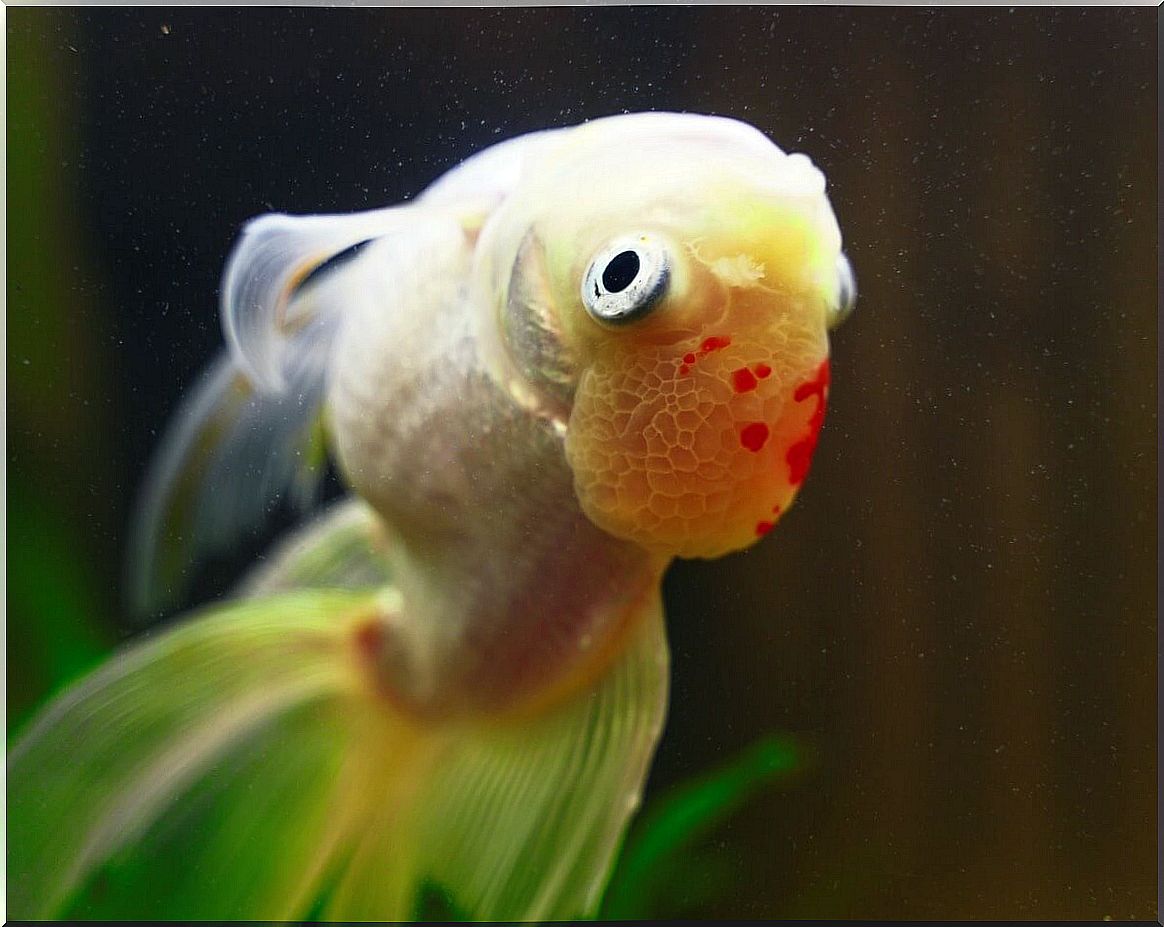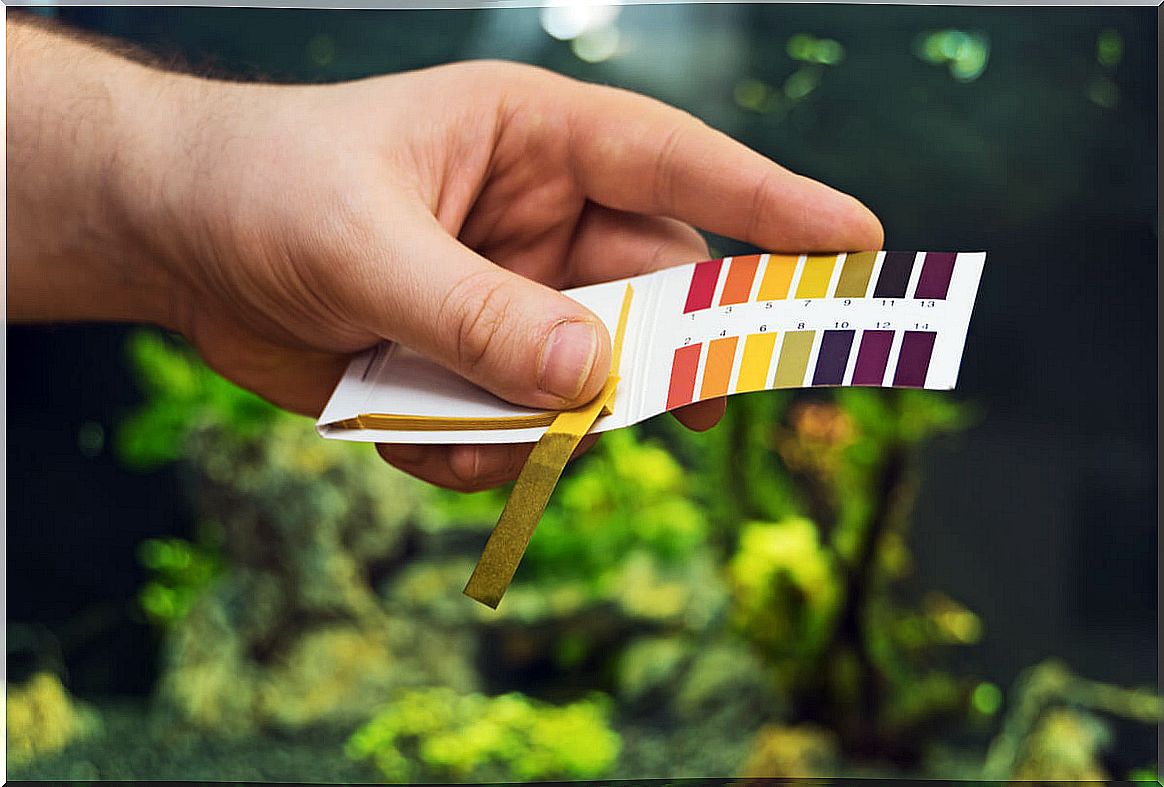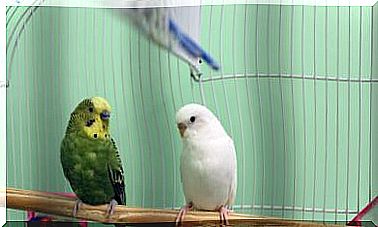Fungi In Fish: Types, Symptoms And Treatments

Although they appear morphologically simpler than a cat and dog, fish are also hosts to parasitic, bacterial, and fungal conditions and are prone to long-term disease. It is the obligation of every owner of an aquarium to know the types of fungi in fish, their symptoms and treatments, in order to solve any pathology in the tank.
The lesions caused by fungi in fish usually appear in the form of scaling, rot of the fins, cottony masses at the eye level and many other things. In turn, these clinical signs are indicative that the water quality is not adequate or that the animals are stressed. If you want to know more about the subject, keep reading.
What are fungi in fish?
The Fungi kingdom encompasses a group of living beings that “fall” between plants ( Plantae ) and animals ( Animalia ). Molds, yeasts and mushroom-producing organisms are heterotrophs, so they obtain energy from organic matter in the environment and are not able to synthesize it on their own, unlike plants. Therefore, they cannot be grouped with them.
On the other hand, fungal cells are surrounded by a chitin cell wall, unlike animal cell bodies, which only have a plasma membrane that delimits them from the environment. Although they are neither animals nor plants, fungi are phylogenetically closest to the first group.
As the representatives of the Fungi kingdom are heterotrophs, they need sources of organic matter to nourish themselves and grow. Some obtain it from the decomposition cycles of the soils, but others, dermatophytes, adhere to the skin of vertebrates to seek keratin (keratinophilic) and destroy it (keratinolytic), thus becoming pathogens.
Although fish do not have keratin in their scales – they are composed of dentin – they can also undergo a similar process, in which a fungal species settles on the skin and destroys the environment, in order to feed itself. The organisms that cause these conditions are what we know today as “fungi in fish”.

Types of fungi in fish
To date, studies estimate that there are up to 5.1 million fungal species, although very few of them have been discovered. It is possible that some types of fungi in fish have not even been described, but in the following lines, we will tell you the most important ones that are known. Do not miss it.
Saprolegnia (saprolegniasis)
Saprolengnia is a genus of saprophytic and parasitoid fungi. This means that they can feed on dead cells of the animal without causing damage, or failing that, they are able to settle in the gills of the fish and begin to cause an invasive picture. This last scenario gives rise to a mycosis.
This genus is one of the most problematic in fish farming and aquarium alike, especially when water temperatures drop below 15 ºC or fish are immunocompromised due to poor aquarium conditions. Saprolegniasis lesions present as radial cottony wounds.
Achyla
Achyla is a genus of oomycetes , also known as water molds or water molds. These fungi encyst in the animal’s mouth and produce zoospores, which in turn cause the symptoms of secondary infection. Although various pictures of Achyla species have been recorded parasitizing fish, there is no standard clinical picture as in the case of saprolegniasis.
Aphanomyces invadans (EUS epizootic ulcerative syndrome)
Epizootic ulcerative syndrome is of great importance in fish farming, as it causes significant losses in naturalized fish farms. This condition is caused by Aphanomyces invadans , another aquatic fungus, which this time occurs in fish with necrotized ulcerative lesions and granulomatous responses.
Branchyomyces (branchiomycosis)
This genus of mushrooms is another of the best known in the aquarium world, as it causes the famous and feared gill rot. These pathogens invade the gills of the animal, causing symptoms of respiratory distress. Death comes in less than 48 hours, with a rate of up to 50% of those affected.
Ichthyophonus hojeri
Ichthyophonus hojeri is a unicellular protist that parasitizes fresh and saltwater fish. In these animals, it causes chronic and systemic granulomatosis. It can also cause damage to the host’s nervous system, which also results in erratic and atypical swimming.
Symptoms of fungi in fish
Depending on the gender that parasites the animal, the symptoms can be very different. However, most fungal lesions in the home aquarium are caused by the genus Saprolegnia, so we will focus on this pathology. Some of its most common clinical signs are the following:
- The fish begins to develop patchy, whitish, cottony lesions. These are found on the skin and in the gills and have a very well circumscribed radial arrangement.
- As the mycelium of the fungus grows, the lesions turn brownish, as they trap mud or silt from the environment.
- The infected animal will also present dermal depigmentation, general apathy and a lack of desire to eat. If left untreated, you will end up dying from the fungus.
If we look at other pictures, it is also common to see the animal taking air out of the water (branchiomycosis) or with reddish granulomatous lesions ( Ichthyophonus infection ). In general, the initial manifestations usually take place on the surface of the scales and then progress to more diffuse systemic symptoms.
Possible treatments
Some of the pathologies mentioned here have no cure, while others can be addressed with generic medication for sale at any aquarium outlet. In any case, it is very difficult for you to find the proper diagnosis on your own, so it is always best to go to a specialized veterinarian or a professional in the world of aquariums.
Beyond the pathogen, it may be helpful to follow a standardized protocol. If you have noticed fungus on the fish in your aquarium, follow these steps quickly:
- Change at least 50% of the water before starting the treatment. Naturally, all water that you add must be pretreated with products that remove chlorine and stabilize its values.
- Adjust the temperature of the tank according to the pathogen, and if possible, increase it 2 or 3 degrees more. If the physiological limits of the fish species allow it, high temperatures can cause the pathogen to die or enter a state of quiescence , in which it does not reproduce.
- Bathe affected fish in saline solutions (1 tablespoon of salt per liter of water) for 15-30 minutes. This should be done outside the aquarium, in a separate container. Potassium permanganate solutions (1 gram per 100 milliliters of water) for 30 minutes are also a good option.
- Buy generic medications to treat the entire aquarium, always removing the charcoal filter before starting. SERA baktopur® and Tetra fungistop® are some of the best known.
- Once the treatment is finished, clean the filters, gravel, plants and all the decoration of the fish tank. Only then will you get rid of possible spores and remnants of the pathogen.
We do not recommend under any circumstances that you look for home remedies to treat infections. The most you can do without professional care is to perform saline baths or increase the temperature of the aquarium, but even these activities report certain risks to the animal’s health. Look for a veterinarian-recommended treatment and don’t experiment on your own.

Prevention and final recommendations
As you may have seen, many of these fungal species are saprophytic and become pathogenic when the animal’s immune system is damaged. Therefore, the best prevention to avoid fungi in fish is always to take care of the animals. This happens by keeping the water parameters stable, not overstressing them, making the water changes wisely and avoiding overcrowding.
If you keep these constants in a suitable range, these pathogens do not have to appear in your aquarium. Additionally, we also recommend that you quarantine any new fish for a week in a separate tank before adding them to the main aquarium. Only in this way will you avoid infectious pictures that come from outside.









